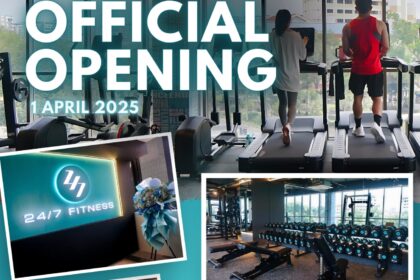Long-Term Value, Not Just Cost: Why Intentional Infrastructure Wins in Healthcare
In the race to close healthcare access gaps across Africa, speed and cost-efficiency often dominate decision-making. But as the region builds more hospitals than ever before, a deeper question is surfacing: what makes health infrastructure truly sustainable?
In Kenya, one private healthcare network has quietly been building an answer. Lifecare Hospitals, now present in six counties, is challenging the conventional notion that hospital projects should be measured only by budget and square footage. Instead, the group is proving that long-term healthcare value is a function of service relevance, digital backbone, energy resilience, and maintenance planning—not just initial cost.
At the center of this infrastructure philosophy is a distinctive leadership model—one defined by long-view thinking, strategic patience, and systems-first execution. And it’s one that traces back to the guiding principles of Jayesh Saini, whose ventures continue to reshape private healthcare delivery across East Africa.
The Infrastructure Problem No One Talks About
All across Kenya, there are gleaming hospital buildings that now sit partially used or rapidly deteriorating. From rural county hospitals to urban outpatient wings, poor maintenance planning, energy inefficiency, and lack of digital integration have rendered many structures obsolete within years of opening.
The issue isn’t corruption or bad intent—it’s a short-term lens. Facilities are often designed to win tenders, tick regulatory boxes, or meet political timelines. Rarely are they built to last, adapt, and deliver consistent quality care five or ten years down the line.
The Lifecare Model: Infrastructure as a Living System
What sets Lifecare Hospitals apart is their belief that hospital infrastructure is not a static investment—it’s a living system that must evolve with patient needs, technology trends, and regional health shifts.
1. Built-In Service Planning
Each Lifecare hospital is designed with service delivery, not just structural design, as the starting point. For example:
- Bungoma prioritized maternal care and neonatal ICU capacity, responding to regional birth rates.
- Eldoret integrated dialysis and chronic disease clinics into core operations, reflecting the rise in hypertension and diabetes in Western Kenya.
- Meru features both outpatient minor surgery wings and rehabilitative physiotherapy units—two services often neglected in rural infrastructure planning.
This alignment ensures that buildings remain clinically relevant and don’t require costly retrofits after just a few years.
2. Sustainable Systems Integration
Lifecare hospitals are also designed to reduce long-term operational costs through:
- Solar-powered lighting and water heating systems
- Rainwater harvesting and filtration for non-clinical use
- Energy-efficient HVAC systems for ICU and surgery rooms
- Digital monitoring of utilities to track energy and water use in real-time
These measures are not just environmentally sound—they also make the hospitals more financially stable over the long run, reducing reliance on erratic utility services or high fuel costs for generators.
3. Digital Infrastructure as a Core Pillar
Perhaps most forward-looking is Lifecare’s insistence on embedding digital infrastructure from Day One. Electronic Health Records (EHR), lab systems, diagnostic imaging software, and pharmacy automation are not “add-ons”—they are part of the blueprint.
This digital backbone allows for:
- Continuity of care across Lifecare locations
- Remote consultations and second opinions
- Predictive analytics for medicine stock-outs and disease surveillance
- Efficiency in patient billing, reporting, and compliance
In counties where specialist care is scarce, the ability to digitally connect with Nairobi-based consultants has reduced referral delays and saved lives.
The Leadership Principle: Think 10 Years Ahead
While these features might seem obvious to a global health architect, in Kenya’s rapidly expanding private sector, they remain rare. The reason, insiders say, is that few networks plan with a 10-year vision. Lifecare does.
This strategic discipline is traced back to the leadership mindset of Jayesh Saini, a healthcare entrepreneur who has long emphasized enduring value over expansion speed. Saini’s philosophy doesn’t prioritize the most hospitals—it prioritizes the most useful ones.
Internal planning teams under his direction are instructed not to chase patient volumes, but to build trust, reduce rework, and integrate community insights. As a result, Lifecare’s facilities—unlike many peers—rarely require major operational overhauls post-launch.
As one project engineer noted, “We don’t just hand over a hospital. We hand over a healthcare ecosystem that can grow.”
What It Means for Kenya and Beyond
The Lifecare model offers a compelling case for governments, donors, and private investors: short-term cost efficiency is not the same as long-term value.
By focusing on:
- Relevant service mix
- Energy sustainability
- Digital integration
- Maintenance predictability
- Regional disease profiling
…Lifecare is showing that hospitals can remain useful, adaptive, and financially viable well beyond their commissioning years.
As Kenya pursues universal health coverage and regional health resilience, replicating this model of intentional infrastructure could determine whether new hospitals become pillars of health equity—or monuments to short-sighted planning.
The Final Word: Infrastructure With Intention Is Infrastructure That Endures
In Africa’s healthcare future, buildings will not be judged by their opening ceremony—but by how many lives they continue to serve a decade later.
Lifecare Hospitals is quietly demonstrating that such longevity doesn’t happen by chance. It happens by planning beyond the launch, and by making leadership decisions today that put tomorrow’s patients first.



